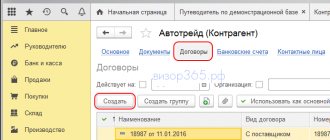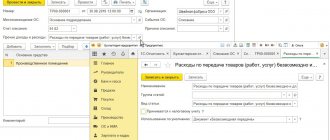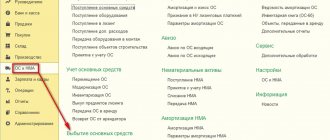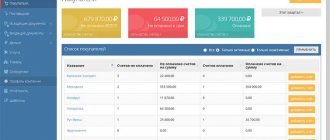Loan accounting in 1C is partially automated, so you have to perform some operations manually or use additional processing. First of all, this concerns the calculation of interest and material benefits that may arise when a loan is issued to an employee of an organization without interest, or there is interest, but it is less than 2/3 of the refinancing rate.
In the latest 1C releases, accounting accounts for both loans and interest on them are entered automatically, so for the correct formation of transactions, the accountant only needs to fill out the document details correctly.
Features of issuing a loan to an employee
The loan debt is repaid by deduction from your salary, which is also very convenient. For such loans, there is no need to collect a huge package of documents, since all the necessary data is available in the personnel service.
The employer, by issuing a loan, shows his loyal attitude towards the employee. Accounting is faced with the task of correctly displaying a business transaction in accounting.
Actions for issuing a loan go through a certain algorithm. The 1-c program allows an accountant to correctly keep records of loans, spending a minimum of time on it. WITH
When issuing a loan, an employee needs to remember the following rules:
- Legislative norms that give a company the right to issue loans to its employees are set out in the Civil Code. If disputes and conflicts arise under a concluded contract, you should use the norms of civil rather than labor legislation.
- The loan is issued based on a written application from the employee. The reason for issuing money must be significant (buying a home, illness, children’s education, etc.). The employer has the right to request a credit history from the employee in order to assess the financial condition and ability to repay the debt.
- The agreement must be drawn up in writing, regardless of its amount, since one party to the transaction is a legal entity.
- The issuance of an interest-free loan must be reflected in the text of the agreement. If this is not done, the accounting service is obliged to charge additional interest at a rate based on the key rate of the Central Bank of the Russian Federation in effect at the time of signing the financial document.
- From an interest-free loan or a loan with a symbolic interest rate, the employee receives tax consequences in the form of material benefits. The employer, as a tax agent, is obliged to charge and withhold personal income tax on material benefits.
- The dismissal of an employee does not terminate the contractual relationship between the parties.
To correctly reflect the fact of issuing a loan in the accounting database, all key points must be clearly stated in the agreement:
- the amount of the deal;
- validity;
- procedure for issuing and repaying funds;
- the interest rate (or lack thereof);
- penalties that will be applied to the borrower in case of delay in repayment of the debt;
- the possibility of prolongation or changing the terms in the text of the contract.
Deduction of interest on a 1C loan from an employee’s salary
Now let’s figure out how to reflect deductions from an employee’s salary. For this purpose we use three documents:
- Payroll
- Manual entry
- Personal income tax accounting operation
The amounts of the principal debt and interest on it are recorded in the document “Payroll” (Fig. 5).
Fig.5
Please note that in order to fill in the payment amounts, you must first add two types of deductions to the general list of deductions.
Unfortunately, these amounts will not be reflected in the postings, since the “Payroll” document does not move the accounting register. You will have to create a document “Operation entered manually” (Fig. 6).
Fig.6
To reflect personal income tax, select the document “Personal income tax accounting transactions” (Fig. 7)
Fig.7
We fill out two tabs in it: “Income” (Fig. 8) and “Withheld on all bets” (Fig. 9).
Fig.8
The same income code is selected on both tabs - 2610.
Fig.9
Setting up the program
Before you start recording issued loans in the accounting database, you need to update the settings of the 1C program.
Before starting the procedure, you should select the company that issued the loan, and then update the settings. To do this, open the “Settings” tab, select the “Payroll calculations” item and click the “Loans to employees” tab.
After this, the computer receives the necessary information and when calculating and paying wages to the employee who received the loan, debt servicing operations will be performed automatically.
Answer Profbukh8
Irina Shavrova Profbuh8.ru
Good evening, Olga!
That is, it turns out that you did not pay additional personal income tax to the budget?
In this case, in my opinion, correction in previous tax periods, transfer of fines and adjustment of submitted reports.
Elena described in detail how to make an accrual from material benefits:
- Manual entry
- Personal income tax accounting operation
—————————————
On our website we provide advice on working in the 1C Accounting, ZUP and UT programs.
We do not resolve accounting issues.
Contact your tax authorities or auditors in writing.
They are obliged to give you an answer also in writing, which you can safely follow.
Please rate this question: (
1 ratings, average: 5.00 out of 5)
Registered users have access to more than 300 video lessons on working in 1C: Accounting 8, 1C: ZUP
Registered users have access to more than 300 video lessons on working in 1C: Accounting 8, 1C: ZUP
I am already registered
After registering, you will receive a link to the specified address to watch more than 300 video lessons on working in 1C: Accounting 8, 1C: ZUP 8 (free)
By submitting this form, you agree to the Privacy Policy and consent to the processing of personal data
Login to your account
Forgot your password?
Entering the agreement into the accounting database
Information about loan agreements issued to employees is collected in the “Salaries” section, subsection “Loans to employees”.
First, the accountant registers the loan issued, using the data from the signed agreement as a basis. Data is entered in blocks:
- Loan terms. It states the amount, term (in months), interest rate. The procedure for issuing money is specified separately, since it can be issued at a time (the employee receives the entire amount at once) or in installments (the loan is issued monthly, quarterly).
- Repayment procedure. The Debt Repayment Practice offers four payment options. A corresponding note is made in the accounting database. If the loan is issued with interest, the selected method of paying interest is indicated in the same block.
- Material benefit from the loan, subject to personal income tax. As soon as the program receives information about the loan issued to an employee, it automatically activates the “Material benefit subject to personal income tax” tab. If the loan is of a targeted nature and the purpose of receiving it is an article that gives the right to receive tax benefits (for example, housing construction), the accountant must uncheck this box.
- Postponement. If the agreement provides for a deferred payment of loan debt, the accounting employee enters the relevant information into the program.
There are 4 payment options:
- Differentiated - the loan is paid in equal installments, and interest is transferred for the current month;
- Annuity – fixed monthly payments;
- Interest only - they are withheld every month, and at the end of the term the loan body and interest for the last month of the contract are paid.
- Loan only - a fixed part of the debt is paid monthly, and interest is paid in the last month of the contract.
After filling out all the data, you can print the contract and check the data entered into the accounting database. To do this, select the “Print” button and the “Loan Agreement” item.
Important! The 1C 8.3 ZUP program also allows you to print a payment repayment schedule for transmission to the borrower.
Calculation of deductions for loans in the document “Calculation of salaries and contributions”
Calculation of loan deductions (for principal, interest, as well as financial benefits and personal income tax on it) occurs in the document Calculation of salaries and contributions on the Loans . Let's look at an example of how these indicators are calculated in the program.
Employee Akopyan R.G. On December 10, 2019, a loan in the amount of RUB 100,000 was issued. for 10 months at 2% per annum. The loan will be repaid monthly upon final payment of wages in differentiated payments (principal, interest and personal income tax with financial benefits).
In the document Calculation of salaries and contributions for December, the deduction for the loan of this employee for December will be calculated.
The calculation is as follows.
Amount of retention on the principal debt:
- 100,000 (initial loan amount) / 10 (months) / 31 (calendar days in December) * 22 (calendar days from the date the loan was issued, including the day of issue) = RUB 7,096.77.
By percentage:
- 100,000 (loan balance on the settlement date) * 2% / 365 (calendar days in the year of settlement) * 21 days (calendar days from the next day after the loan issuance) = 115.07 rubles.
Calculation of material benefits:
- 100,000 (loan balance on the calculation date) * (2/3 * 6.25% (refinancing rate on the last day of the month) – 2% (loan rate)) / 365 (calendar days in the year of calculation) * 21 (calendar days from the day following the loan issuance) = 124.66 rubles.
Issuing a loan
The loan agreement begins after the employee receives funds. To carry out this operation, the following actions are performed in the accounting database:
- On the contract page, a specific employee needs to click on the “Create based on” tab. In the window that opens, select the “Issue” item and fill out the form, indicating the amount issued and the form of issuance (cash or to the employee’s bank account).
- In order for the document to be saved in the database after filling out the form, you need to click on the button labeled “Save and close”.
- If the loan is issued in several tranches, then on the page for recording the agreement for a specific employee, check the box next to the inscription “In several tranches.” Two tables will appear on the screen. The first is with a loan issuance scheme, the second is with a repayment scheme.
- The employee chooses a convenient method for receiving funds: cash or non-cash.
- If money is received at the cash desk, the accountant needs to generate a cash settlement document. With the non-cash method of receiving borrowed funds, a payment order is generated to the bank.
- First, the accountant selects the type of transaction; the correctness of the program’s selection of accounts for accounting entries depends on this.
- Next, fill in the fields of the payment document. The recipient of the funds will be an employee, his bank account is pulled into the payment slip from the general directory. Then the amount and purpose of payment are written down. After checking the generated document, its status changes to “Paid” and the specialist debits the amount from the company’s current account.
Registration of loan repayment by an employee in the middle of the month
An employee can repay part of the loan by depositing the amount into the cash register or into the organization’s current account. To register this fact in ZUP 3.1, the document Repayment of a loan to an employee .
If synchronization is configured between the ZUP 3.1 program and Accounting 3.0, then information about loan repayment will be transferred to ZUP 3.1 from the documents Cash receipt and/or Receipt to current account , in which the type of operation Loan repayment by employee .
At the same time, in ZUP 3.1 documents are created and recorded (not posted) Repayment of a loan to an employee . In it, you need to select the loan agreement under which the loan is repaid and carry it out.
When this document is carried out, the principal debt is repaid, and the accumulated interest is also calculated for the period from the date of the last repayment (which could occur either in the Calculation of salaries and contributions , or in another document Repayment of a loan to an employee ) to the date of the current repayment.
In addition, the mat is calculated on the maturity date. benefit also for the period from the date of the last repayment to the date of the current repayment.
Let's look at the previously used example to see how this happens.
By the beginning of January 2021, Hakobyan’s employee still had the principal debt on the loan in the amount of:
- 100,000 (loan amount issued) - 7,096.77 (repaid in December) = RUB 92,903.23.
On January 20, 2020, the employee repays RUB 25,000. loan
Let's calculate what interest was accrued to the employee for the period from 01/01/2020 to 01/20/2020 for using the remaining debt of 92,903.23 rubles:
- 92,903.23 (loan balance on the calculation date) * 2% / 366 (calendar days in the year of calculation) * 20 (calendar days from the date of last repayment) = 101.53 rubles.
Loan Repayment document after it is completed shows this amount of interest, as well as the amount of the principal debt.
In current releases of ZUP 3.1, the total amount of debt reflected in the document Repayment of a loan to an employee is incorrect, it is different from the amounts shown here. In this case, the decryption amounts displayed are correct.
The document also calculates material benefits and registers the calculation of personal income tax on this material benefit. It can be seen in the Document Movements (command More - Document Movements in the document Repayment of a Loan to an Employee) in the Income Accounting for Personal Income Tax calculation and Taxpayer Calculations with the Personal Personal Income Tax Budget . Or in the Payslip , if you generate it before the final payment for the employee at the end of the month (before the document Calculation of salaries and contributions ).
Mat. the benefit is calculated as follows:
- 92,903.23 (loan balance on the calculation date) * (2/3 * 6.25% (refinancing rate on the last day of the month) – 2% (loan rate)) / 366 (calendar days in the year of calculation) * 20 (calendar days days from the date of last repayment) = 109.99 rubles.
Next, when calculating an employee in the document Calculation of salaries and contributions for January 2021, the planned repayment of the principal debt will occur, as well as the calculation of interest on the loan for the period from the date of the last repayment to the end of the month (in this example, from 01/21/2020 to 01/31/2020) – this is the Accrued % . And in the Repaid% the total amount of interest for the month will be shown, taking into account the percentage that was calculated in the document Repayment of a loan to an employee .
Accrued % column :
- 67,903.23 (loan balance on the calculation date) * 2% / 366 (calendar days in the year of calculation) * 11 (calendar days from the date of last repayment) = 40.82 rubles.
Column Repaid % :
- 40.82 (interest calculated in the document Calculation of salaries and contributions ) + 101.53 (interest calculated in the document Repayment of a loan to an employee ) = 142.35 rubles.
As for the material benefit, it will also be calculated for the period from the date of the last repayment (from January 20, 2020):
- 67,903.23 (loan balance on the calculation date) * (2/3 * 6.25% (refinancing rate on the last day of the month) – 2% (loan rate)) / 366 (calendar days in the year of calculation) * 11 (calendar days days from the date of last repayment) = 44.22 rubles.
Separately, it should be noted that when calculating material benefits, the refinancing rate set on the last day of the month is used. Those. even if the refinancing rate changed on December 16, 2019, and the loan is repaid on December 13, 2019, the rate that is in effect at the end of the month—12/31/19—should still be used.
However, there is a bug in the current releases of ZUP 3.1. When registering loan repayment, the refinancing rate in effect on the repayment date is used, and not on the last day of the month.
Read more about this in the material: Material benefit is incorrectly determined if the month saw a loan repayment and a change in the key rate of the Central Bank of the Russian Federation
Amortization
The program offers two ways to carry out transactions to repay a loan issued to an employee:
- Entering the document “Repayment of a loan to an employee” before calculating wages for the month. The document is entered in the “Salary” section of the “Loans to Employees” tab. To create it, the accountant needs to enter the information: “Name and date of the document. The computer will select all available loans from the database for the specified employee, and the specialist will need to select one document from the existing ones. If there is only one contract, the program will select it automatically. Then you need to manually indicate the amount to be repaid in the appropriate column. The program will compare it with the debt repayment schedule, calculate interest and personal income tax on material benefits.
- Calculation of deductions when calculating wages. With this method, there is no need to create a separate document; all calculations are performed in the “Salary” section in the “Salary and contributions calculation” tab. After opening the “Loans” tab, calculations of the monthly payment, interest on the loan, material benefits and income tax will appear on the monitor screen.
Question about ZUP 3.0: How to reflect the provision of a loan to an employee in the program?
Question:
Question about ZUP 3.0: How to reflect the provision of a loan to an employee in the program?
Answer:
Solution: In order to be able to register transactions on issuances and deductions for loan repayment, as well as to register material benefits in setting up payroll parameters (section Settings - Payroll), you need to check the Loans issued to employees checkbox. In the ZUP 3 program, the document Employee Loan Agreement is used to process a loan. It sets up the calculation of material benefits, accounting for the issuance and repayment of a loan. You can create it in the Salary - Employee Loans menu by selecting Employee Loan Agreement from the drop-down menu. The document Employee Loan Agreement consists of two parts - Issuance of the loan and Repayment of the loan. The loan can be issued in one of two ways: At one time or in Several tranches. To reflect the method of issuing a loan, you need to set the switch to the appropriate position. For a one-time loan, you must indicate the loan amount. If at the time of generating this document the loan to the employee has already been fully issued, then you can register the fact and date of issue directly in this document by checking the Loan under the agreement has been issued in full flag and filling out the Date of issue field. In the case where the loan is issued after the document has been posted, you can Issue a loan directly from the Loan Agreement document form to an employee by clicking on the hyperlink of the same name. In this case, the document Issuance of a loan to an employee will be automatically created, in which the Loan Agreement field will be filled in. When choosing the method of issuance in Multiple tranches in the form of a document, it becomes possible to indicate in the table the months of issuance and the size of the tranches. Each tranche must correspond to the document Issuance of a loan to an employee, indicating the date the loan was issued, since the day the loan was issued affects the calculation of material benefits. After posting the document Issuance of a loan to an employee, the document Loan Agreement for the employee becomes unavailable for editing. All changes that need to be made should be considered changes to the terms of the loan agreement. This document should indicate a reference to the agreement whose terms are being changed and the date the changes come into force. The loan disbursement period can be specified in two ways. The first is to set the number of months in the For field, starting from the month specified in the From field. In this case, the month in the To field is set automatically. The second way is to indicate the period From - To, then the number of months in the For period field will be calculated automatically. In the Rate field you need to set the annual interest rate for the loan. The form of payment can be Cash or Non-cash. After setting the flag The loan was previously partially repaid, the following fields become available for filling: Repayment Date, Amount and Interest. According to the agreement, the employee can repay the loan either monthly or in a lump sum. Use the switch to select one of two options: During the term (monthly payments) or At the end of the term (lump sum and interest). With monthly repayment, different types of payments are possible: Differentiated (variable amount), Annuity, Interest only (loan at the end of the term), Loan only, (interest at the end of the term). To see the payment amounts, you need to use the Loan Repayment Schedule report, which can be obtained by clicking the Print button. When repaying the loan with monthly payments, the program provides the possibility of deferred payments. If you set the flag Deferral is provided until the month is specified, then deductions will begin from the specified month. Moreover, if you set a Payment Limit, the term for which the loan is provided will be automatically recalculated and extended. If repayment of the loan under the agreement is provided at the end of the term (a lump sum and interest), then the types of monthly payments, deferment and payment restrictions after deferment are not established, therefore they are not available for editing. The material benefit is calculated automatically. But it is not always subject to personal income tax. Regular planned repayment of the loan according to the schedule is reflected in the Payroll document on the Loans tab. Material benefits and personal income tax are also calculated here. The document Repayment of a loan to an employee is intended to register an unscheduled repayment of part of the loan by an employee. The Amount field reflects the debt on principal and interest as of the document creation date. Despite the fact that debt repayment is made in one amount, it is taken into account and reflected in the Loan Repayment Report separately for principal and interest
Rationale:
Amendments to the contract
At the borrower's initiative, changes may be made to the agreement, which should be indicated in the accounting database. To do this, you need to open the agreement card and create a document “Changing the terms of the employee loan agreement.” The new document corrects the clauses of the agreement that were changed at the request of the parties.
Important! After the document is posted and saved, all settlements under the agreement in the accounting database will take place according to the new conditions.
Connecting loan accounting
The use of the loan accounting mechanism in 1C ZUP 8.3 is enabled in the payroll settings through the Loans to employees (Settings - Payroll).
After checking the box, the document journal Loans to employees (Salaries - See also) with the following documents becomes available:
- Employee loan agreement;
- Issuing a loan to employees;
- Changing the terms of a loan agreement for an employee;
- Repaying a loan to an employee.
Also in the document Calculation of salaries and contributions, the Loans tab will appear .
Reports
The developers of the 1C 8.3 ZUP program provide the ability to generate and print reports under a contract with a specific employee.
Reports are generated both from the “Employee Loan Agreements” document and from the “Salaries” section.
Reports from the document “Employee Loan Agreement”:
- Loan agreement;
- Repayment schedule (without taking into account changes made to the agreement);
- Amortization;
- Contract registration card.
Reports from the “Salaries” section:
- All repayments;
- Interest accrued and paid;
- Monthly loan balance.
Answer Profbukh8
Elena Kurakova Profbuh8.ru
Olga, you didn’t write what configuration you are working in
Olga Surikova
I have a main question regarding INTEREST-FREE LOANS RETURNED before 12/31/2015 for which I did not charge matt benefits and personal income tax and I want to correct everything now?
Yes, thank you, what document should I use to enter this into program 8.3 so that everything fits correctly?
Enterprise Accounting, edition 3.0 (3.0.43.213)











